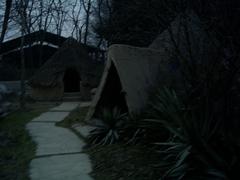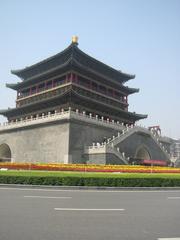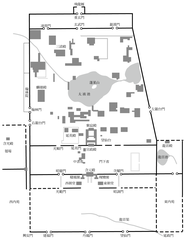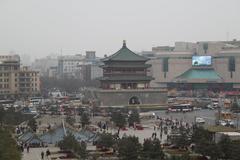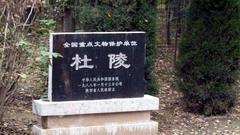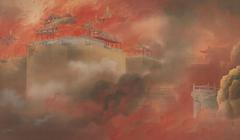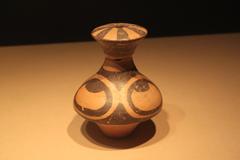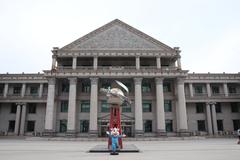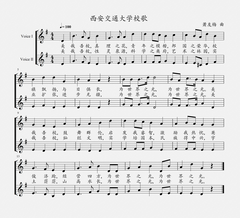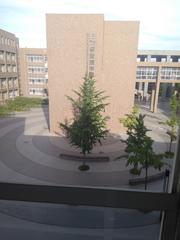Jingye Temple Xi’an: Visiting Hours, Tickets, and Historical Guide
Date: 15/06/2025
Introduction
Jingye Temple (净业寺), nestled on the north slope of Xi’an’s scenic Zhongnan Mountains in Chang’an District, is a venerable institution in Chinese Buddhism and a showcase of classic monastic architecture. Established in 581 CE during the Sui dynasty, it is most renowned as the ancestral court of the Vinaya School (Luzong)—one of the Eight Great Schools of Chinese Buddhism—emphasizing monastic discipline and ethical conduct. The temple’s historical prominence was heightened during the Tang dynasty when the eminent master Daoxuan codified Buddhist precepts here, profoundly influencing Buddhist monastic life in East Asia. The temple’s reach extended to Japan via Daoxuan’s disciple, Jianzhen, who introduced Vinaya teachings and helped establish cross-cultural Buddhist ties.
Architecturally, Jingye Temple harmoniously blends traditional Chinese Buddhist design with the natural beauty of its mountainous setting. Its layout features the Shanmen (Mountain Gate), Four Heavenly Kings Hall, Mahavira Hall, a pagoda forest with steles, and peaceful gardens—all aligned according to feng shui principles. Visitors are treated to a tranquil environment, where spiritual ambiance meets historical gravitas.
The temple operates daily from 8:00 AM to 5:30 PM, offering modestly priced tickets and accessible pathways. With its rich history, cultural significance, and convenient visitor amenities, Jingye Temple is a top destination for travelers, historians, and spiritual seekers alike. For up-to-date details, consult official travel resources like TravelChinaGuide and China Discovery.
Table of Contents
- Introduction
- Historical Evolution of Jingye Temple
- Architectural Highlights
- Jingye Temple and the Vinaya School
- Visitor Information
- Nearby Attractions
- Practical Travel Tips
- Spiritual and Pilgrimage Significance
- Recognition and Preservation
- Community and Contemporary Buddhist Practice
- FAQs
- Conclusion
- References
Historical Evolution of Jingye Temple
Sui Dynasty Foundations
Founded in 581 CE, Jingye Temple quickly became a locus for Buddhist and Taoist activity due to its strategic mountain location.
Tang Dynasty: Golden Age and Risshū Origins
Master Daoxuan established the Vinaya School here in the early Tang dynasty, cementing the temple’s place in Buddhist history. Imperial patronage, including Emperor Gaozong’s construction of a stone ordination altar in 665 CE, elevated its status. Daoxuan’s disciple, Jianzhen, later brought these monastic precepts to Japan, making Jingye Temple the cradle of Risshū Buddhism (chinawiki.net).
Decline, Restorations, and Modern Era
After the Tang dynasty, the temple experienced cycles of decline and revival, with significant restorations during the Ming and Qing dynasties. It was damaged in the Cultural Revolution but was designated a National Key Buddhist Temple in 1983 and has since been restored (chinawiki.net).
Architectural Highlights
Jingye Temple exemplifies traditional north-south axis Buddhist architecture:
- Shanmen (Mountain Gate): Ceremonial entrance, redesigned by architect Zhang Jinqiu, with calligraphy by Nan Huai-Chin.
- Four Heavenly Kings Hall: Houses guardian deities and Maitreya Buddha.
- Mahavira Hall: Spiritual heart of the temple, enshrining Sakyamuni Buddha and key bodhisattvas.
- Sutra Library: Safeguards ancient Buddhist scriptures.
- Pagoda Forest: A collection of 16 pagodas from various dynasties, including the unique Tang dynasty High Relief Lama Pagoda and Ming dynasty Lama Pagoda.
- Gardens and Steles: Landscaped areas and ancient inscribed stones provide a contemplative atmosphere (chinawiki.net).
Jingye Temple and the Vinaya School
Jingye Temple’s status as the ancestral seat of the Vinaya School (Luzong) is central to its historical importance. The Vinaya School, founded by Daoxuan, focuses on monastic discipline and ethical conduct. The temple became a hub for the study and dissemination of Buddhist precepts, influencing not only Chinese but also Japanese Buddhism through the work of Jianzhen (chinawiki.net).
Visitor Information
Visiting Hours
- Open daily: 8:00 AM to 5:30 PM (sometimes until 6:00 PM in peak season).
- Best time: Mornings for a tranquil experience.
Tickets
- General admission: 40 RMB.
- Discounts: Available for students, seniors, and children.
- Pagoda access: Additional 20 RMB.
- Where to purchase: On-site or online via official channels (Trip.com).
How to Get There
- By taxi/ride-hailing: 45–60 minutes from Xi’an city center.
- By bus: Lines 915 or 916 to Zhongnan Mountain Scenic Area, then a short taxi/shuttle to the temple.
- Guided tours: Offered by local agencies (China Discovery).
Accessibility
- Paths: Mostly paved and gentle slopes.
- Mobility: Some areas (e.g., pagoda forest) have stairs or uneven surfaces; assistance available on request.
Facilities
- Restrooms: Near the entrance.
- Dining: Limited on-site; bring water/snacks.
- Shops: Souvenirs and incense available.
Nearby Attractions
- Zhongnan Mountains Scenic Area: Hiking and Taoist sites.
- Famen Temple: Home to relics of the Buddha.
- Big Wild Goose Pagoda, Small Wild Goose Pagoda: Central Xi’an Buddhist landmarks.
- Caotang Temple, Guanyin Chan Temple: Other important Buddhist temples in the region (tripgd.wordpress.com; China Xian Tour).
Practical Travel Tips
- Best seasons: Spring (March–May) and autumn (September–November) for mild weather and colorful foliage.
- Dress code: Modest attire; cover shoulders and knees.
- Photography: Allowed outdoors, restricted indoors—check signage.
- Tour guides: Recommended for deeper historical and architectural context.
- Transportation: Private transfer or tour recommended due to limited public transit.
Spiritual and Pilgrimage Significance
Jingye Temple is a vibrant pilgrimage site, hosting annual festivals such as Vesak and the Lunar New Year. Ancient steles inscribed with scriptures foster a meditative atmosphere for practitioners and visitors alike (chinawiki.net).
Recognition and Preservation
Designated a National Key Buddhist Temple in 1983, Jingye Temple benefits from ongoing government-supported preservation efforts that maintain its cultural and architectural heritage (chinawiki.net).
Community and Contemporary Buddhist Practice
The temple remains an active monastic community, hosting regular meditation sessions, rituals, and educational activities. Its monks uphold the Vinaya tradition and frequently participate in inter-monastic exchanges and public cultural events (chinawiki.net).
Frequently Asked Questions (FAQ)
Q: What are Jingye Temple’s visiting hours?
A: Open daily from 8:00 AM to 5:30 PM (sometimes until 6:00 PM).
Q: How much are tickets?
A: General admission is 40 RMB; discounts for students and seniors. Pagoda access requires an extra 20 RMB.
Q: How do I get there from Xi’an city center?
A: By taxi, ride-hailing, or bus (routes 915/916 to Zhongnan Mountain, then taxi/shuttle).
Q: Are guided tours available?
A: Yes, through local agencies or as part of broader itineraries.
Q: Is the temple accessible for those with limited mobility?
A: Most paths are paved, with some areas requiring assistance.
Q: Can I take photos inside the temple?
A: Photography is allowed outdoors; observe restrictions indoors.
Conclusion
Jingye Temple stands as a serene monument to China’s Buddhist heritage, offering visitors a harmonious blend of spiritual ambiance, historical depth, and architectural beauty. Whether your interest is religious, historical, or cultural, a visit to Jingye Temple is a profound journey into the heart of Xi’an’s legacy. For updated visiting hours, ticket details, and guided tour options, refer to official tourism platforms and consider enhancing your visit with the Audiala app for exclusive guides and maps.
References
- Jingye Temple in Xi’an: Visiting Hours, Tickets, History & Travel Tips (TravelChinaGuide)
- Jingye Temple in Xi’an: Visiting Hours, Tickets, and Historical Significance (chinawiki.net)
- Jingye Temple Visiting Hours, Tickets & Main Attractions in Xi’an (China Highlights)
- Jingye Temple Visiting Hours, Tickets, and Guide to Xi’an’s Historic Religious Sites (China Discovery)
- Jingye Temple Visiting Hours, Tickets, and Historical Significance (China Odyssey Tours)
- Jingye Temple Visiting Hours, Tickets, and Guide to Xi’an’s Historic Religious Sites (Trip.com)
- Top Five Buddhist Temples in Xi’an (tripgd.wordpress.com)
- Guanyin Chan Temple (China Xian Tour)
- Xi’an Tourism Board (China Discovery)
- UNESCO: Xi’an Wind and Percussion Ensemble (UNESCO)
For images and multimedia, ensure descriptive alt text such as “Jingye Temple Shanmen Gate at Sunrise” or “Interior of Mahavira Hall at Jingye Temple” to improve engagement and accessibility.
